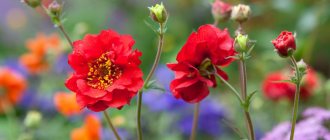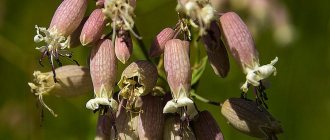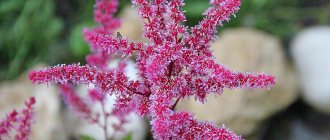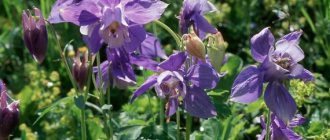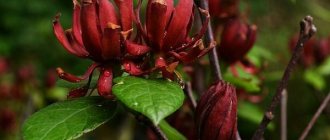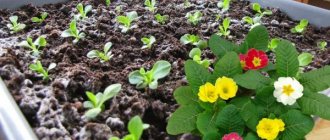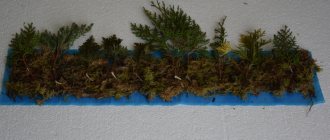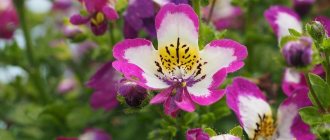Arctotis flowers are rightfully one of the most striking representatives of garden plants. Along with luxurious-looking dense greenery, they have magnificent inflorescences.
Unfortunately, Arktosis can now rarely be seen in flower beds and private garden plots, although they have been grown by people for a long time. We sincerely hope that in the foreseeable future this situation will improve, and these beautiful flowers will be able to gain well-deserved popularity among gardeners. After all, arctotis are unpretentious, hardy and at the same time incredibly aesthetic and decorative.
Growing arctotis from seeds
Sowing seeds
The seedling method of growing arctotis is very reliable and effective, which is why experienced gardeners prefer it. There are no difficulties in this. If desired, a beginner in floriculture can also easily cope with this task.
A favorable time for sowing arctotis seeds is the second half of March. You can use ordinary wooden or plastic boxes as planting containers, but it is better to immediately use peat pots or small plastic cups. In small containers, 3-5 grains are sown each, and in large containers, sowing is carried out in shallow furrows. Arctotis seeds are sprinkled with a thin layer of sand of 1-2 millimeters and carefully moistened with a spray bottle. All crops are covered with a transparent polyethylene film or glass and left in a warm room with a temperature of at least 23 degrees.
The cover is removed after approximately 7-10 days, when the first shoots appear. To moisten the soil, use bottom watering (through a tray). Thinning may be necessary when sowing densely.
Growing Arctotis (Ostiospermum) from seeds
Arctotis seedlings
After the appearance of 2-3 true leaves, young Arctotis plants are planted with 2-3 seedlings in individual pots along with a lump of earth. It is recommended to pinch out seedlings that have grown to 10-12 centimeters. This procedure will promote tillering of the crop.
A very important stage in caring for seedlings is hardening them off. 10 days before planting arctotis in open ground, the seedlings begin to gradually harden, that is, accustom them to natural conditions. The first walks of the flower should be short - from one to three hours. Every day, the time spent by young plants in the fresh air should be gradually increased, gradually bringing it up to 24 hours.
Arctotis annual or perennial
Nov 15 • Uncategorized • 48 Views • No comments on the post Arctotis annual or perennial
Contents
Arctotis has been grown as an ornamental flower crop for about two centuries, but in Russia this plant is not known to everyone. These flowers are very graceful and have rich colors. They are considered distant relatives of the gerbera. But her flowers are always open, while arctotis’s always close at night and on cloudy days.
Planting arctotis in open ground
When to plant arctotis
Arctotis is a heat-loving plant that cannot survive even the slightest night frost. That is why arctotis planting in open ground in areas with a temperate climate should be carried out only in the last week of May. By this time the soil should have warmed up sufficiently. In colder regions, planting is advisable only in early or mid-June.
How to plant arctotis
First you need to prepare planting holes, the depth of which should not be much greater than the volume of the seedling's earthen ball. The distance between the holes is 30-40 centimeters. A young plant with a lump of earth on the root part or a peat pot is placed in a pre-moistened hole. The free space is covered with earth, slightly compacted and watered abundantly.
Light-loving arctotis require a lot of sunlight and warmth during the day, so it is recommended to choose open areas for them on a small hill, on a flat surface, but not in a lowland.
The soil in the selected area must be dug up, adding lime when digging, and drained well. The unpretentious Arctotis flower loves soils with added sand, but clay soils and waterlogged soils are contraindicated for it.
In mild and warm climates with early spring and long summers, arctotis seeds can be planted directly in open ground around the second half of April. 3-5 grains are placed in each planting hole. The interval between holes may vary. It depends on the chosen type and variety of arctotis flower. For example, for low-growing crops 20-25 centimeters are enough, and for tall crops – 40-45 centimeters. The crops are crushed with a thin layer of soil or fine-grained sand, compacted a little and moistened generously with a scattering watering can or fine sprayer.
Caring for arctotis seedlings consists of timely moistening and weeding of weeds, loosening the soil on the site and protection from pests and diseases. The first shoots should appear in about 10-15 days. At the age of two weeks, it is recommended to thin out young plants.
If you follow all the rules for planting and caring for arctotis, you can see the first flowering in 50-60 days.
Choosing a variety for planting
Of the almost 70 varieties of this plant, only 5 varieties are cultivated in Russian latitudes. Below they will be discussed in more detail.
Short-stemmed Arctotis
It is a small perennial up to 20 cm high. Its leaves are covered with thick pubescence, similar to felt. The color of the outer petals ranges from white to orange, the central part is dark brown.
Arctotis rough
The height of the plant is up to 50 cm. It has short leaves up to 3-4 cm long. The petals are white, the central part is yellow.
Arctotis stemless
The plant has a powerful root system and long leaves (more than 10 cm). The leaves are green above and whitish below. The diameter of the inflorescences is relatively small - up to 5 cm. The color of the outer petals is purple, the central part is dark purple. Along the perimeter of the central part there are orange stamens.
The only variety that can be grown in the Russian climate as a perennial when covered for the winter.
Arctotis stechasolifolia
A tall plant growing up to 1 m in height. The shoots are covered with thick silvery pubescence. The leaves are asymmetrical, with a jagged edge; they are also densely pubescent. Inflorescences up to 6 cm in diameter. The color of the petals is white-orange, the central part is dark orange. In cloudy weather, the inflorescences close.
Arctotis hybridus
This variety includes several varieties derived from the previously listed varieties. They can have a wide variety of inflorescence colors and different stem heights. The shape of the flower may differ from the classic one characteristic of asteraceae. Despite these differences, the agricultural technology of the plant and the conditions for its cultivation are completely the same as those for other arctotis varieties.
Caring for arctotis in the garden
Caring for arctotis is very simple and even beginners can do it. This does not take much time and effort, since all procedures are standard - watering, weeding, loosening, fertilizing and pruning. Experienced flower growers recommend not to forget about preventive measures that will protect the flower from diseases and various pests.
Watering
Since the flower has African roots with a hot climate and dry weather, it follows that drought is not very scary for crops. But excess moisture can destroy the plant’s root system or seriously harm it. Abundant and frequent watering will lead to root rot.
Another feature of the arctotis flower is its elongated roots, which can obtain moisture from great depths. Even in extreme heat and in the absence of natural precipitation for a long time, the flower remains attractive and fresh in appearance.
Watering drought-resistant flowering crops is necessary moderately and only after the top layer has dried by 5-10 millimeters. This is especially necessary at high temperatures. Ordinary tap water or settled water and slightly heated under the sun's rays is suitable as irrigation water.
Feeding
It is strictly not recommended to use organic fertilizers in any form to feed arctotis. Flowering subshrubs generally do well and cope without additional nutrition. If the grower nevertheless decides to apply complex mineral fertilizers, then this should be done only at the stage of bud formation and during the active flowering phase.
The soil
The soil in the flower garden needs to be regularly loosened and weeded. Loose soil will allow air to pass more easily to the roots and promote further growth of arctotis.
Trimming and pinching
In order for more new buds to appear on plants, experienced gardeners and flower growers recommend constantly removing already closed and wilted flowers. In addition, such pruning will help maintain the high decorativeness and attractiveness of arctotis.
Wooden support pegs in a flower garden with tall species and varieties will help keep the crops in an upright position and prevent lodging.
Arktotis in winter
Annual species and varieties of arctotis after flowering are removed from the ground and destroyed. In perennial species of Arctotis, approximately in the second half of October, the above-ground part is cut off by ninety percent. The remaining part (no more than 10 centimeters high) is covered with mulch made from sawdust, fallen leaves or straw, and spruce branches or any covering material are laid on top.
general description
Arctotis is a garden plant that belongs to the Asteraceae family. In appearance it resembles a chamomile or gerbera. It is perennial, but most often it is planted as an annual, since it does not tolerate winter frosts well, and by spring the plant still dies or gets very sick. This flower is native to South Africa.
The leaves of the plant are fleshy, they have a light green color with a slight silvery tint. The flower itself reaches a height of up to 70 cm, depending on the species. Its inflorescences are single and quite large. They can have completely different colors. Most often, the flowers are pink, white, blue, orange and red. The diameter of the inflorescences is approximately 8 cm. The petals are smooth and pleasant to the touch, and they are also slightly pointed at the ends.
Arctotis flowering begins in early summer and continues until the first frost. If you plant this flower in the ground with ready-made seedlings, it can begin to bloom in early May. It blooms profusely and tolerates unfavorable conditions well, and even light frosts down to minus 5 degrees.
The peculiarity of this plant is that its flowers close in the evening or in cloudy weather, and in the morning, in bright sunshine, they open again. After flowering, it forms a special achene, which is brown in color. It contains small seeds of this flower, which can be collected and planted next year. The seeds themselves are very small and scatter quickly when ripe. They need to be collected at the end of August.
Arctotis diseases and pests
One of the most common arctotis diseases is gray rot. Unfortunately, it cannot be treated. To save plants that are not yet diseased, it is recommended to completely remove all infected specimens from the flower garden. All remaining crops must be sprayed with disinfectant solutions prepared on the basis of the drug “Fundazol” or other fungicides.
Preventive measures against gray rot include planting flowering plants on a small hill or on a flat area, but with moderately moist soil.
Possible pests of arctotis are meadow bugs and aphids. If there is a small concentration of bedbugs, you can treat the bushes with various organic infusions or solutions. Onion infusion and mustard solution prepared from ten liters of water and one hundred grams of mustard powder have an effective effect on the pest. In case of a massive insect invasion, you can use special insecticidal preparations.
Sap-sucking aphids very often infect plants with various viruses and infections. To combat it, various types of insecticides recommended for specific garden pests are suitable. For example, Aktara, Aktellik, Fitoverm.
Combination with other plants
Arctotis, due to its variety of colors, is effectively used to create flower arrangements in the open ground. It is planted on rocky areas, hills, and borders.
Arctotis goes well with low-growing ornamental crops:
Tall varieties are grown for cutting. They look great in bouquets with other flowers.
Arctotis or bear's ear is an annual plant. Valued for its decorative flowering and unusually colored foliage. Video on how to grow arctotis and how to care for the crop:
“>
There are no similar posts
Types and varieties of arctotis with photos
Arctotis stoechadifolia
The most popular tall species in culture, reaching a height of one hundred or more centimeters. It has a longer flowering period than other species. Features - strong stem, large leaf blades with a pubescent surface, tall peduncles, single inflorescences of white, yellow, gray, purple and brown.
Arctotis rough (Arctotis aspera)
A medium-height South African annual, not exceeding 50 centimeters in height in cultivation. Features: yellow-brown inflorescences about 5 centimeters in diameter. In the wild it grows up to 1 meter. Not resistant to transplants.
Arctotis hybrid (Arctotis x hybridus)
A popular species in floriculture, as it combines in its family a large number of colors and shades during flowering, as well as varieties of different heights. The growth of low plants is about 20 centimeters, medium ones are up to 70 centimeters, tall plants are more than 120 centimeters. The size of the average inflorescence is about 10 centimeters in diameter.
Arctotis breviscapa
A low-growing perennial South African species, known in culture since the first half of the nineteenth century. Features: shoots and leaf blades with a white pubescent surface, single inflorescences of an orange hue.
Features of Arctotis
In nature, arctotis is represented by subshrubs and herbaceous plants. On the surface of the foliage and shoots there is dense pubescence of white or silver color. Alternate or oppositely located leaf plates have a wavy or incised-toothed shape. The saucer-shaped inflorescences-baskets reach 50–80 mm in diameter; in appearance they are very similar to chamomile or gerbera. Single flowers are located on long peduncles, they include marginal reed flowers of purple, yellow, white or pink color, as well as tubular middle flowers, colored violet, purple or brown. The multi-row involucre of the inflorescence includes many scales. The fruit is a brownish-gray seed with a tuft. The seeds remain viable for 2 years.
Arctotis is a perennial, annual and biennial. Perennial species in regions with relatively cool climates are grown as annuals.


